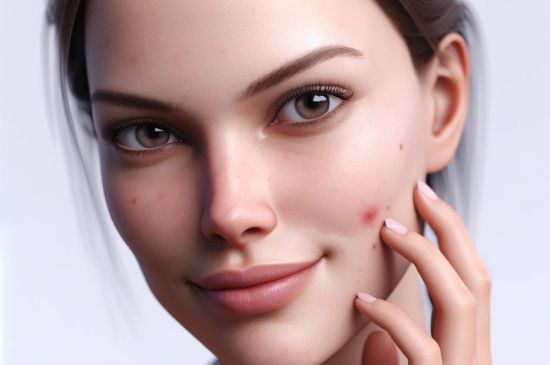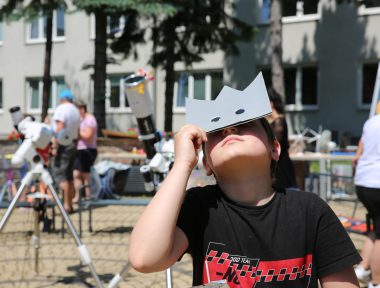Affecting millions worldwide, acne transcends age, gender, and ethnicity. Yet, beyond its appearance, acne often carries a profound impact on the individuals´ self-esteem, mental and emotional health. Characterised by blemishes, blackheads, and sometimes painful cysts, it can be a source of frustration and insecurity for many. The primary objective of this article is to provide a clear and accessible understanding of acne – what causes it, the different types, and practical tips for managing and preventing breakouts. Whether you are a teen navigating adolescence or an adult facing persistent breakouts, this article is designed to equip you with the knowledge and tools to face the mirror with confidence.
What causes acne?
Acne is the result of a complex interplay of various factors, each contributing to the development of this skin condition. These factors encompass genetic predispositions, hormonal fluctuations, excessive sebum production, bacterial overgrowth and follicular hyperkeratosis.
Genetic predisposition: Genetic predisposition plays a significant role in the development of acne. If one or both parents had a history of acne, their offsprings will probably experience it as well.
Hormonal fluctuations: Hormones also play a role in the development of acne. Androgens, a class of hormones comprising testosterone and estrogen, increase during puberty and when women are on their period. Elevated levels of androgens prompt an increase in sebum production, potentially resulting in pore obstruction and consequent acne formation.
Excessive sebum production: The skin naturally produces sebum to hydrate and safeguard it. The sebaceous glands, however, create an excessive amount of sebum when they are hyperactive. This extra oil may combine with debris such as dead skin cells to cause plugged pores, which are a major cause of acne.
Follicular hyperkeratosis: The hair follicle is like a tiny pocket in the skin where hair grows from. These follicles have an opening on the surface of the skin. Follicular hyperkeratosis is a term that refers to a condition where the openings of hair follicles on the skin become blocked or clogged.
Bacterial overgrowth: Propionibacterium acnes (P. acnes) is a naturally occurring bacterium that lives on the skin. This bacterium frequently overproliferates in the hair follicles of acne sufferers. P. acnes consumes sebum, and the growth of the organism can cause an immunological reaction that results in inflammation and the development of red, swollen acne lesions.
What are the types of acne?
There are numerous ways that acne can appear, and each has unique traits and degrees of severity. The following are the common forms of acne lesions:
Open comedones, also known as blackheads, are tiny, dark lesions that develop when sebum and dead skin cells plug a hair follicle. The skin’s melanin reacting with air is what gives the black colour.
Closed comedones (whiteheads) resemble blackheads but have a completely blocked hair follicle. On the skin, they look as tiny pimples that are the colour of flesh.
Inflammatory Acne:
Papules: Tiny, swollen pimples that are sensitive, red, and inflamed but do not contain pus. They happen when the hair follicle walls crack and the body’s immune system reacts to the germs and debris.
Pustules are red, painful lumps with a yellow or white pus centre. They are created when the walls of the hair follicle burst, inflaming the area and giving rise to what are frequently referred to as “pumps.”
Nodules: Large, painful nodules that are solid and located deep within the skin. They form when inflammatory, blocked follicles harm the tissue around them.
Cysts: painful, deep, pus-filled lesions that may leave scars. Cysts develop when a comedone’s contents drain into the surrounding tissue, resulting in severe inflammation.
Best treatments for acne:
Topical treatments:
- Benzoyl peroxide: Kills microorganisms, clears clogged pores, and lessens inflammation. It is available without a prescription or over-the-counter.
- Retinoids (such as Retin-A, Adapalene): Help clear pores and encourage cell turnover, which stops the development of new comedones.
- Topical antibiotics: Destroy skin-surface germs and lessen inflammation.
- Salicylic Acid: Aids in skin exfoliation and pore cleaning. It can be found in a number of over-the-counter products.
- Azelaic acid: It has anti-inflammatory qualities and aids in clearing clogged pores.
Oral treatments:
- Antibiotics: Doxycycline and minocycline are two examples of oral antibiotics that are used to eradicate bacteria and lessen inflammation. They’re frequently given for mild to severe acne.
- Oral contraceptives: For females, some birth control tablets can control hormones and lessen acne, particularly if the acne is hormonally based.
- Anti-androgen drugs: By lowering levels of androgen, drugs like spironolactone can effectively treat hormonal acne by decreasing sebum production
- Isotretinoin (Accutane): A powerful oral medication used for severe, cystic acne that hasn’t responded to other treatments. It’s highly effective but has potential side effects and requires close monitoring by a healthcare provider.
In summary, acne is a widespread skin problem that results from a complex interaction of variables, including increased sebum production, aberrant keratinization, bacterial growth, hormonal impacts, heredity, and environmental factors. Effective acne management necessitates a multifaceted approach. It’s crucial to keep in mind that everyone responds to treatments differently, and a dermatologist’s advice is helpful when creating a customised regimen.
The cover image was generated by Bing using DALL-E 3 technology.


 4 min.
4 min. 


